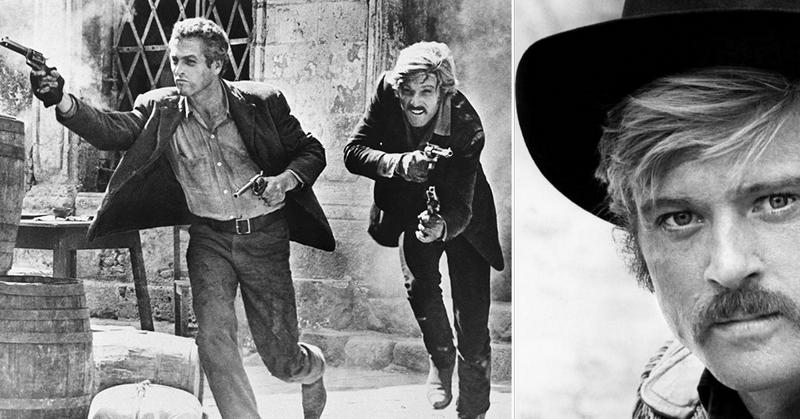'Butch Cassidy And The Sundance Kid:' Why That Ending?
By | January 3, 2019

Butch Cassidy And The Sundance Kid's ending, a freeze-frame of our outlaw heroes right before they charge half of the Bolivian army, is sudden and might even make the film seem incomplete. Based on historical facts and the overwhelming odds, we can assume that this "blaze of glory" ends in the violent deaths of Butch and Sundance, played by Paul Newman and Robert Redford. But why did director George Roy Hill choose not to show us the shootout? It's one of the most memorable scenes in '60s cinema, perhaps because it isn't really a "scene" at all. It's a still image, accompanied by the shouts of the Bolivian soldiers and the sound of huge volleys of gunfire.
The Movie Ends With A Shootout We Don't See

Released in 1969, Butch Cassidy and the Sundance Kid was one of the top films of the groovy era. Part of the appeal may have been that the film was based on the exciting adventures of real-life outlaws, but its handsome and studly stars, the long-established Newman and relative newcomer Redford, were bound to be box office draws. Although the fate of the outlaws was well known, Butch Cassidy and the Sundance Kid's ending might have left audience members scratching their heads. The true "final" scene, though audiences didn't know it, was really the long conversation that takes place between the two charming and wounded bank robbers before their fatal blaze of glory. But why?
'Butch Cassidy And The Sundance Kid' Was Directed By George Roy Hill

George Roy Hill directed Butch Cassidy and the Sundance Kid, which was written by William Goldman. Although many people believed the film to be an accurate portrayal of the lives and deaths of western outlaws, Hill took a lot of artistic license with the story of Robert LeRoy Parker, who was better known as Butch Cassidy (Newman), and his partner in crime, the Sundance Kid (Redford), whose real name was Harry Longabaugh. The film's opening credits end with a disclaimer of sorts, admitting that only "most of what follows is true."
Joining the dashing duo for much of the movie was Etta Place, Sundance's girlfriend, who was played by Katharine Ross (who'd appeared just two years earlier in The Graduate). A few years later, Hill directed Newman and Redford once again in the 1973 movie, The Sting.
Does The Movie’s Ending Imply That Butch And Sundance Survive?

Because the ending of Butch Cassidy and the Sundance Kid does not show the deaths of the outlaws, many audience members were left with the feeling that maybe, just maybe, the likable and hunky duo managed to escape the Bolivian army, despite the insurmountable odds. After all, earlier in the movie the pair jump off a huge cliff into a raging river and survive… and one of them admitted he couldn’t even swim. By the end of the movie, it seems that Butch and Sundance were indestructible. History tells us, however, that they were shot multiple times in a shootout with the Bolivian army and buried in unmarked graves. Rumors swirled for years that one or both of the men escaped and lived out the rest of their days under assumed names.
Was The Abrupt Ending Designed To Preserve The Butch And Sundance Myth?

Throughout the entire movie, Goldman’s script and Hill’s cinematography combine to build up the romantic myth of the Wild West outlaws. Sure, Redford and Newman’s characters were criminals, but they were likable, admirable, and oh so cute! Showing them dying in a hail of gunfire that messed up their pretty faces would have destroyed the myth that the director created. Hill may simply have not wanted to leave audiences with unpleasant images of his heroes' defeat as their final view of the pair.
Was The Freeze Frame Ending A Cinematic Technique?

It was odd that the Hill’s film concluded with a freeze frame that left audiences without closure. But it could be that Hill got his inspiration from the freeze-frame ending from the 1959 French New Wave film The 400 Blows, directed by Francois Truffaut. But there's a key difference: While the freeze frame ending in The 400 Blows left viewers with many questions, the audience knows what happened to Butch and Sundance.
Response To The Film’s Ending Was Mixed

Although many filmgoers seemed to appreciate that Butch Cassidy and the Sundance Kid ended before Newman and Redford were left in a bloody pulp, the freeze-frame ending didn’t sit well with others. One notable critic was famed critic Roger Ebert. Ebert thought that most of the movie was excellent, but that the ending derailed the film’s greatness. He noted that the script writing of the final scene was “so bad we can’t believe a word.” He rated the movie a 2.5 out of 4 stars, primarily because of the ending.
'Butch Cassidy And The Sundance Kid' Still Resonates

Debate about the freeze-frame ending, and whether it was more effective than a graphic blaze-of-glory scene, will persist. But this finer point hasn't ruined the movie for most viewers (Roger Ebert being an exception); Butch Cassidy and the Sundance Kid has long been acclaimed as one of the best buddy films ever made. It snagged four Academy Awards and three other Oscar nominations. It ranks 73rd on the American Film Institute’s list of top 100 movies. Butch and Sundance, even though they are technically bank robbers and outlaws, landed in the 20th spot on the American Film Institute’s list of 100 greatest movie heroes. It seems that audiences love charming bad boys -- and it doesn’t hurt that Redford and Newman are just so darn handsome, too.
